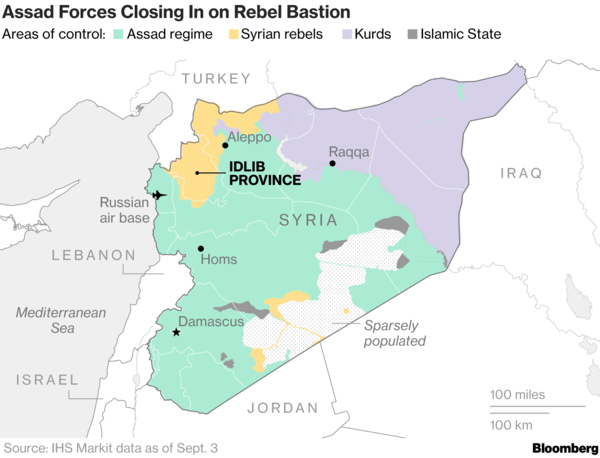By Kent R. Kroeger (September 11, 2018)
The following essay is mostly personal opinion, adorned with quotes from anonymous sources, all linked together by wild conjecture and creative license, and peppered throughout with occasional facts whenever possible — in other words, just your average news story today.
_________________________________________________________________
Typically, when we think of a coup d’état, we think of tanks in formation in front of a parliamentary building, jersey barriers surrounding a presidential palace, and armed militia controlling entry and exit at major access points and thoroughfares in a capital city.
But coups can come in many different forms, some ruthless and violent, and others barely noticeable outside of a small cadre of military, political and bureaucratic elites.
For the purposes of this essay, however, a simple dictionary definition of ‘coup d’état’ will suffice:
Coup d’état, also called Coup: the sudden, often violent overthrow of an existing government by a small group whose chief prerequisite is control of all or part of the armed forces, the police, and other military elements. Unlike a revolution, which is usually achieved by large numbers of people working for basic social, economic, and political change, a coup is a change in power from the top that merely results in the involuntary replacement of leading government personnel. A coup rarely alters a nation’s fundamental social and economic policies, nor does it significantly redistribute power among competing political groups.
The definition is narrow enough to distinguish a coup from legal transfers of political power, such as through elections or other constitutional processes, but broad enough to capture less obvious, but no less involuntary, removals of ruling elites.
The question posed in this essay’s title is not suggesting the U.S. is in the midst of an existing, or soon-to-be-implemented, coup attempt; but this essay is offering evidentiary signs and visual markers of what an American coup might include.
What this essay is not addressing is if the president has demonstrably committed a high crime and misdemeanor or is incapable of executing the duties of president. In such a case, a coup is not necessary. The Constitution through Article II, Section 4 (Impeachment) or the 25th Amendment (Incapacitation) has the means to deal with that problem.
We are considering here a situation where powerful people decide they don’t like a presidential election outcome and want to change the result sub rosa; a situation where the president has not committed a high crime and is notincapacitated and, instead, where conspiratorial actors attempt to remove him or her from power for illegitimate reasons.
Who would be the actors behind an American coup?
Coups require the cooperation of a decent number of people. Not too many. But a good number — lets say, 30 people. For a large country, like the U.S., maybe 50 people are needed.
An American coup would furthermore require people who were not only motivated to remove a duly-elected president, but capable of planning and implementing such a hostile takeover. That last requirement narrows the potential pool of conspirators down to a tiny fraction of Americans — probably less than 1,000 people in strategically useful positions.
Qualifying as a potential conspirator is not a function of wealth either, though the financial stakes involved in an attempted coup would no doubt inspire great interest in its potential risks among this nation’s wealthiest elites. Bill Gates or Warren Buffett might have the financial resources to fund an American coup, but they lack the incentive (the current president is working just fine for them and a failed coup would be really bad for business) and specific knowledge, or a strong relationship with people with such knowledge, to execute a successful coup. The super wealthy are better off watching from the sidelines.
On the other hand, a successful American coup will need to undermine the legitimacy of the current president and, therefore, the conspirators will need at least the passive cooperation of the nation’s major news, social and entertainment media outlets. And given that six companies control 90 percent of today’s U.S. media, it is likely that an American coup would include some of the most senior executives in our nation’s largest media companies.
Far more important than money or media access, however, will be an ideological esprit de corps among the conspirators. Bonded by like minds and interests, the potential conspirators will have a common understanding of the imminent threat posed by the current president and why his or her removal from power needs to happen now and not through the normal constitutional procedures. The coup’s urgency will feel so organic to this cabal, so obvious as to its necessity, that there may be surprisingly little communication between conspirators during the planning and execution stages. They will just know what to do and when to do it.
So who are the conspiratorial candidates? Probably two groups top the list: neoliberals and neoconservatives. An overly simplified description of these two political factions goes as follows:
Neoliberals, also known as corporatist Democrats, focus on economic issues (both domestic and global in scope), and attempt to maximize the public support while focusing on the interests of large corporations and private capital. Their patron saint is Bill Clinton and are represented today by Barack Obama, Hillary Clinton, and the Democratic Party establishment. They do not like Bernie Sanders, Alexandria Ocasio-Cortez or Tulsi Gabbard. In fact, they will do everything in their power to crush their collective bones into dust.
Neoconservatives originally were a sect of prominent Democrats (Daniel Patrick Moynihan, Henry “Scoop” Jackson) who focused on defense and national security issues and were fiercely anti-Communist, though always supporting major aspects of the Democrats’ social agenda, particularly with respect to civil rights. The early neoconservatives were a reaction to the emerging New Left of the 1960s and early 1970s that emphasized pacifism and moral relativism, a set of beliefs the neoconservatives blamed for George McGovern’s epic defeat to Richard Nixon in 1972. Eventually, the neoconservatives expanded into the Republican ranks as well (William Kristol, Norman Podhoretz, Jeanne Kirkpatrick, Elliott Abrams, Paul Wolfowitz, Richard Perle, Paul Bremer) and, today, are represented by the likes of Bill Kristol, Jon Podhoretz, Robert Kaplan, Trump national security adviser John Bolton, US Secretary of State Mike Pompeo, US Ambassador to the UN Nikki Haley, among others. Arizona Senator John McCain was also considered a neoconservative.
Perhaps the defining characteristic of modern neoconservatism is its belief that the American national interest often requires the U.S. to intervene (militarily, if necessary) in the internal affairs of other countries deemed anti-democratic and/or hostile to American global interests. Where the 1648 Treaty of Westphalia established that the sovereignty of individual nation-states was supreme and that the internal affairs of one nation-state was not to be interfered with by another nation-state, the neoconservatives tore such thinking asunder. In their view, it is the inherent right and moral imperative of supranational entities, such as the United Nations, or the U.S. itself, to intervene in the affairs of individual nation-states, whether they violate the rights of their own citizens or potentially threaten the broader interests of the U.S. and the international community.
In other words, neoconservatives love regime change wars and generally push for them at every opportunity.
While neoliberalism and neoconservatism are distinct ideologies, their adherents often commingle and individually may move freely between them. Case in point, many of Hillary Clinton’s closest national security advisers during her two presidential campaigns were staunch neoconservatives (Robert Kaplan, Sidney Bloomenthal), even though she is generally considered the neoliberal prototype.
Yet, I refuse to dive down a rat hole quibbling about the precise definitions of these two factions and therefore, for the purposes of this essay, I treat them as largely one cohesive group.
Neoliberals and neoconservatives are real groups and not intellectual abstractions. And while they don’t use secret handshakes and ancient rituals to initiate their brethren into the rules and customs of their ideological sect, they do possess fiercely homogeneous lifestyles that make membership in them obvious to their members. They go to the same schools, attend the same parties, work for the same companies, vacation on the same islands, were military officers at the same time, share the same spouses, read the same political columnists, and use the same financial advisers. Most importantly, they know who belongs and doesn’t belong to their respective sect.
Bernie Sanders, you are not a member of the neoliberal and neoconservative sects and will never be…even if you beg…on both knees.
What would be the tactics and methods used in an American coup?
This is the easiest question of all to answer.
Short of tanks on the White House lawn, the tactics and methods of an American coup would mirror tactics and methods the U.S. already employs in instigating coups outside the U.S.: (dis)information campaigns, manipulation of the popular media, financial incentives, planting conspirators inside the existing ruling group, and enlisting the ideological and (sometimes) material support of military leaders, the domestic security apparatus and the nation’s major economic interests.
Worldwide there have been 43 attempted coups since 2010, most have been in Africa (31), and only 9 were at least temporarily successful. Coups are hard, even in small countries. With a country the size of the U.S., the task is monumental.
But there is some guidance on how to execute a successful coup. Edward N. Luttwak, the godfather of coup planning and prevention, worked for U.S. Department of Defense’s Office of Net Assessment and was a consultant to the National Security Council, the White House Chief of Staff, and several other foreign governments. In 1968, he wrote the book Coup d’État: A Practical Handbook.
Though many of the conditions he views as necessary for a coup to succeed do not currently exist in the U.S., such as a prolonged economic crisis, the book still offers the basic structural patterns of successful coups.
For example, according to Luttwak, coups require the cooperation of military officers commanding units that can be quickly placed around government headquarter buildings and key hubs within the capital city. Luttwak also points out that passive, large-scale acceptance by the public is essential, as is the necessity for conspirators to move quickly and minimize violence. “The ideal coup is swift and bloodless,” says Luttwak.
In the case of the U.S., given the country’s sheer size and diffuse distribution of power, the Luttwak model does requires some alterations; but, nonetheless, offers a generalized framework for what an American coup would require:
First, delegitimize the president and his administration. An obvious task, but absolutely essential it is done well. Flood the daily news and information streams with negative stories, rumors, and outright lies about the current administration. For every rumor and falsehood you make them address today, they will be blindsided by two more tomorrow. And it will be critical to mix legitimate administration mistakes (which there will be many) with falsehoods. Muddle the information stream to the point where truth and fiction become indistinguishable.
Leverage every relationship you have with the national news media and entertainment industry and enlist them to spread these negative messages through the media bloodstream. Absolutely inundate the average American — politically active or not — with negative stories and images about the current president.
Additionally, plant your operatives in the current administration wherever possible, and have them leak rumors and innuendo to an eager press corps on a regular basis. And when the president’s popularity and influence starts its inevitable death spiral, plant an anonymous editorial in The New York Timessuggesting a disloyal cadre of senior administration officials, out of their selfless sense of patriotic duty, are working against the president’s agenda on a daily basis.
As the administration’s wheels start to fall off as the tenacity of the internal and external opposition grows, the administration loyalists themselves will start making objectively serious mistakes, which will augment, amplify and validate your initial disinformation campaign.
Second, ensure the defense and national security establishment supports the removal of the president. Without their support, even if only passive, there is no chance an American coup can succeed. Let them know what the U.S. defense establishment gains by allowing the premature removal of a duly-elected president. An even larger defense budget than the already bloated one we have today? A limit to the number of regime change wars we engage in at any single point in time?
What the Pentagon wants must be incorporated into the coup’s ultimate objectives.
Senior military officers are, by training and genetics, painfully risk-averse. Believe it or not, they hate ‘hot’ wars. Truly. They hate them. Especially against well-equipped adversaries (North Korea, Iran, Russia, China) where they have a chance of losing many of the sexy weapons systems the U.S. Congress has generously funded. Or worse yet, exposing the irrelevancy and impotence of these multi-million dollar systems. The reputations of defense contractors and distinguished military careers can be permanently ruined in ‘hot’ wars, and that scares stars off of generals.
The neoliberal-neoconservative conspiratorial cabal will profit directly from any of the regime change wars being gamed every day within the Pentagon. That doesn’t mean the Pentagon wants to engage in these wars. But they if they are going to be forced into them by their civilian masters, they want to “win” them according to some objective, though inevitably inadequate, metric.
A successful American coup will therefore establish clear boundaries and goals towards which the defense and national security establishment can buy into and implement once the new administration takes over.
[Donald Trump’s ill-informed, arbitrary, and Twitter-driven foreign policy development process is precisely the type of civilian leadership that would provoke a Pentagon-led mutiny. And, frankly, it would be hard to oppose such a mutiny — though we still should.]
Thirdly, there must be a singular leader that can sell the coup to the American people. To use the current American political context as an example, a coup against Donald Trump must be marketed and legitimized in such a way that even the most ardent and clueless Trump supporter (Eric) will grudgingly concede ‘it had to be done.’ It may be a fair estimate that a quarter of the American people will never accept the removal of a U.S. president (if Richard Nixon’s resignation is any indicator). But that level of resistance is tolerable. They can shamed into silence with enough help from the media.
What cannot happen is something north of 40 percent of the public opposing a president’s removal. In that scenario, all hell breaks loose. Riots breaks out. People will die. And whatever benefit achieved by the president’s removal will be more than lost in the nation’s streets and neighborhoods.
How do you sell a coup to the people? The conspirators will need a consensus-building leader, a statesman, someone with qualities that transcend party and ideology. Without that person, there is no American coup, just a nationwide melee followed by martial law.
How about Barack Obama? He’s why we are facing this problem to begin with.
How about Michelle Obama? We sort of tried that with Hillary and, well, here we are.
Joe Biden? Only Democrats love Joe Biden, and even most of them don’t.
Oprah? Stop it.
Dwayne “The Rock” Johnson? Maybe. A definite maybe.
As of today, no such person exists. And no American coup will succeed without someone possessing that stature.
So, to instigate an American coup, at some point, sooner rather than later, someone must come riding in (figuratively) on a white horse pledging to unite the partisan factions and return order and decency to the American presidency and political system. When that person arrives, then you can have your coup.
Lastly, an American coup will need to look, as much as possible, like democracy in action. In other words, the only plausible route for a coup is through the specious application of either the Constitution’s Article II (Section 4) or the 25th Amendment.
So, even under conducted under false pretenses, the act of removing a president must look to the American people as morally and legally copacetic. Anything less, and the coup fails. However, if the first step outlined above (delegitimization) is executed properly, it should not be hard to make the coup look like the Constitution and our democracy are working exactly the way the Founding Fathers designed them.
Let us admit what many serious people are thinking: Donald Trump needs to be removed from office immediately
Personally, I believe Donald Trump is more an imminent threat to himself than to the U.S. Rather, his powerful enemies are far more dangerous to the American democracy and way of life than he is.
But I also recognize Donald Trump is not up to the job of being president. He’s not even close.
He is a chronic liar, poorly-educated, stubbornly uninformed, inarticulate, immature, misogynistic, devoid of empathy, and emotionally erratic — and that assessment is based on just his behavior in the last 24 hours.
When I tell people my 12-year-old son, right now, would make a better president than Donald Trump, it is not said in jest. I truly believe it. Even scarier, my son believes it.
Unfortunately, our system of government is poorly designed to handle someone like Trump. If we had the United Kingdom’s parliamentary system, Trump would be a non-issue. The ruling party would change the locks on his office door and he’d be marginalized immediately. The British House of Parliament doesn’t f*rt around with numpties like Trump. The UK (or any other parliamentary democracy) will never have a potentially existential crisis such as the one enveloping the U.S. at present. UK’s stodgy politics may be far too biased towards elites and the status-quo, but they will never have a Donald Trump problem. Never.
So, as of today, what should we do here in the U.S.?
Again, the answer is easy. Donald Trump is the duly-elected President of the U.S. He has the constitutional and moral right to stay in office for the rest of his term, assuming nothing disqualifying is revealed by the Robert Mueller probe — and there is little reason to believe he will. If Congress negates the 2016 election because the Russians bought some Facebook memes and stole some emails with the prior knowledge of the Trump campaign, they will be granting the Russians far more power over the U.S. than they deserve.
Plus, pursuing the removal of the president only distracts Americans from the real, more serious issues facing this country.
Therefore, any attempt to contradict the will of the American electorate in 2016 will do more harm to the republic than anything Trump can do as president.
An American coup, through the improper application of the Constitution’s mechanisms for removing a president, is the last thing this country need’s and serious people need to start saying so.
Besides, we only need to wait two more years before the next presidential election. A blink of an eye.
-K.R.K.
About the Author: Mr. Kroeger is a survey and statistical consultant with over 30 -years experience measuring and analyzing public opinion. He currently lives in New Jersey with his wife and son (You can contact him at: info@olsonkroeger.com)






